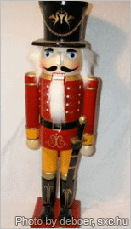
Undoubtedly, Christmas is a special time for a lot of people. Some even consider Christmas to be magical and full of miracles. Since Christmas has been celebrated by so many people for such a long time, several stories about the magic of the holiday have come up over the years. Some of these legends are based on actual events, some are loosely based on true stories, and others are complete fiction. Whatever the case may be, the following Christmas legends have cemented their place in holiday lore.
The Christmas Truce of 1914
Perhaps the most remarkable true Christmas legend happened during World War I. It occurred in the Ypres region of Belgium, where British and German troops were engaged in a bloody battle. On Christmas Eve, the German soldiers began decorating their trenches and the surrounding area for the holiday. They also sang German Christmas carols. Hearing their enemies sing, the British soldiers across the battlefield responded by singing traditional British Christmas carols.
The next morning, Christmas Day, some German soldiers ventured out into the area between the trenches, known as “no man's land.” Following their lead, the British soldiers also left their trenches and greeted their enemies with handshakes. Some accounts say the soldiers even exchanged presents, like cigarettes, whisky, and chocolate. This unofficial truce served another important purpose – collecting slain soldiers from no man's land and giving them proper burials. While it was a surprising event in the middle of war, later attempts at recreating holiday truces were largely discouraged. Due to this reason, the Christmas Truce of 1914 continues to be an unparalleled Christmas legend.
Mistletoe

Aside from the Christmas tree, mistletoe is probably the plant most closely related to the holiday. What you might not know is that mistletoe is a parasitic plant with poisonous berries. While that description might take away from the romantic connotations of kissing under the mistletoe, it is, in fact, the plant's deadly qualities that created the kissing legend.
The story behind mistletoe appears in the Norse mythology of Scandinavia. According to the legend, the goddess Frigga asked all of the plants of the forest not to harm her son, Baldur.
Unfortunately, she neglected to ask the mistletoe. The mischievous god, Loki, then plotted Baldur's death with a spear made of mistletoe, the one thing that could harm him. Fortunately, the other gods brought Baldur back to life. Frigga then decided to make the plant sacred and asserted that it should be a symbol of love rather than death. This Norse myth resulted in the belief that two people standing under a twig of mistletoe should kiss.
Saint Nicholas
While everyone knows about Santa Claus – how he lives at the North Pole, rides a reindeer-powered sleigh, and slips down the chimney to deliver toys – this jovial character is actually based on Saint Nicholas. According to the legend, Saint Nicholas lived in Myra, part of modern-day Turkey. During his lifetime, he performed many miracles and was known for giving coins and other gifts to the poor, though anonymously. After his death, Saint Nicholas's followers continued his tradition of giving to the poor anonymously. Since the poor didn't know who was supplying them with gifts, they often assumed that St. Nicholas was still responsible.
From this legend, the idea of a mysterious person giving gifts was born. While the figure of Saint Nicholas has largely been replaced with Santa Claus, in many parts of the world, children still leave their shoes out on Christmas Eve for Saint Nicholas (or their parents) to slip some coins into.

The Nutcracker
One perennial Christmas legend is the story of the Nutcracker. This legend has appeared in many forms over the years. German author E.T.A. Hoffmann created a children's book titled “The Nutcracker and the Mouse King” in 1816. Since then, the story of Christmas toys coming to life and fighting against mice has continuously resurfaced in many different variations. This legend has appeared in books, movies, and, most notably, a ballet. Due to its widespread familiarity, wooden nutcrackers made to resemble soldiers have become a traditional symbol of Christmas.
A Christmas Carol
A Christmas Carol is a short novel written by Charles Dickens in 1843. Originally titled A Christmas Carol in Prose, Being a Ghost Story of Christmas, Dickens' story has become widely known and has been adapted into countless movies, TV specials, and theatrical performances.
The story tells of a greedy business man, named Ebenezer Scrooge, who would rather work than celebrate Christmas. After being visited by three ghosts who show him Christmas scenes from the past, present, and future, Scrooge changes his miserly ways and learns to embrace the holiday.